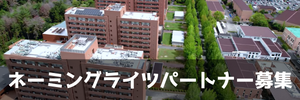(English announcement can be found in the latter half of this notice.)
広島大学バイオマスプロジェクト研究センターと中国地域バイオマス利用研究会の共催で広島大学バイオマスイブニングセミナーを開催しています。バイオマスに関する基本的な考え方から最先端の情報までをカバーして、この地域におけるバイオマスの活動に資することを目的とするものです。第59回を以下の日程で開催しますので、ご参集下さい。
日時 2017年12月6日(水)16:20~17:50
会場 広島大学東広島キャンパス工学部110講義室
https://www.hiroshima-u.ac.jp/eng/access/lectureroom
https://www.hiroshima-u.ac.jp/eng/access/building
https://www.hiroshima-u.ac.jp/access/higashihiroshima
プログラム
解説 広島大学大学院工学研究科 教授 松村 幸彦
講演 広島大学大学院先端物質科学研究科 教授 秋 庸裕
「海洋微生物を活用する油脂バイオリファイナリー」
海洋性微生物オーランチオキトリウムを利用して、食品産業廃棄物、生活・産業廃水、非可食草木類、大型藻類などの未利用バイオマスから、健康食品や医薬品となる高度不飽和脂肪酸、化粧品や養殖用飼料向けの需要が高まっている抗酸化カロテノイド、さらに化成品素材やバイオ燃料までを視野に入れて各種有用油脂を持続的に供給するバイオリファイナリー技術の確立をめざしています。本講演では、微生物育種を含む最近の進展を紹介します。
講演 広島大学大学院先端物質科学研究科 M2 宮本 翔太
「メタン発酵菌叢の油脂分解メカニズムの解明」
難分解性物質である高級脂肪酸に対して高いメタン生成活性を有する菌叢が当研究室で見いだされました。しかし、菌叢解析の結果、高級脂肪酸分解に関与する微生物は検出されず、複合微生物による分解が示唆されました。そこで本研究では、油脂分解メカニズムを明らかにするために、遠心分離処理や希釈法を用いた油脂分解活性に関与する微生物集団のスクリーニング法を検討しました。
講演 広島大学大学院工学研究科 M2 伊藤 大志
「水熱前処理におけるコンブ細胞の挙動」
コンブはマンニトールやアルギン酸など発酵可能糖を含む再生可能エネルギー資源として有用な物質です。しかしこのような有機物の多くはコンブの細胞内または細胞壁に含めれています。水熱前処理は細胞構造を破壊し有機物を取り出すことができます。コンブから適当に有機物を取り出すためには、コンブ細胞がどのような水熱条件下で破壊されるかの知見を得ることは重要です。しかし上記のような研究は未だ報告されていません。本研究ではコンブを、連続式試験装置を用いて水熱前処理しました。圧力、滞留時間は5 MPa、10分で固定し温度を110℃から130℃で変化させました。回収サンプルのうち液相は全有機炭素(TOC)分析、固相は光学顕微鏡を用いて観察しました。水熱前処理後、TOCの値は130℃において上昇しました。固体観察においても130℃における処理物のサンプルの細胞が破壊されていることが確認できました。以上の結果から、コンブの水熱前処理において130℃、5 MPa、滞留時間10分の条件はコンブ内の有機物を取り出すのに有効であることが確認できました。
司会 広島大学大学院工学研究科 研究員 Nattacha PAKSUNG
なお、18:00より意見交換会(参加費 800円)を開催します。ご都合の付く方はこちらにもご参加下さい。
The 59th Hiroshima University Biomass Evening Seminar
(The 24th Hiroshima University ACE Seminar)
Biomass Project Research Center, Hiroshima University, and HOSTY Association are co-organizing the Hiroshima University Biomass Evening Seminar. This seminar covers topics from the fundamentals of biomass to the latest information so that it can contribute the activities on biomass in this district. The 59th seminar will be held as follows. Please join.
Date & Time: Wed .6 Dec., 2017 16:20-17:50
Place: Engineering 110 Lecture Room, Higashi-Hiroshima Campus, Hiroshima University
https://www.hiroshima-u.ac.jp/eng/access/lectureroom
https://www.hiroshima-u.ac.jp/eng/access/building
https://www.hiroshima-u.ac.jp/access/higashihiroshima
Program
Commentary: Yukihiko MATSUMURA
Professor, Graduate School of Engineering, Hiroshima University
Lecture: Tsunehiro AKI
Professor,Graduate School of Advanced Sciences of Matter, Hiroshima University
“Lipid biorefinery using marine microbes”
We aim at practically using sustainable biorefinery technology to convert underutilized biomass such as food wastes, waste water, non-edible plants and marine macroalgae into a various value-added lipids such as biologically functional polyunsaturated fatty acids, antioxidative carotenoids and hydrocarbons for general chemicals and biofuels by marine oleaginous microbe, Aurantiochytrium sp. This seminar will present our recent progress including microbial breeding.
Lecture: Shota MIYAMOTO
M2 Student,Graduate School of Advanced Sciences of Matter, Hiroshima University
“Degradation mechanism of long-chain fatty acid in methane fermentative flora”
A microbial flora with high methanogenic activity against long chain fatty acid (LCFA), a hardly degradable substance, was found in our laboratory. However, as a result of the microflora analysis, microorganisms presumed to be involved in LCFA decomposition were not detected, suggesting decomposition by complex microorganisms. Therefore, in this study, in order to clarify the mechanism of anaerobic LCFA decomposition, screening method of microorganism population involved in LCFA decomposition activity using centrifugation treatment and dilution method was investigated.
Lecture: Hiroshi ITO
M2 Student,Graduate School of Engineering, Hiroshima University
“Behavior of Kelp Cell under Hydrothermal Pretreatment ”
Kelp is known as usable resource for renewable energy because it includes fermentable sugar which are alginic acid and mannitol. However, most of the organic matter exist inside the cell membrane. Hydrothermal process can break the cell structure and make this organic matter released. To make the best of the organic matter, the condition to make this release take place should be elucidated. However, it is yet to be decided. The purpose of this study is to indicate the condition where cells of kelp break under hydrothermal pretreatment. In this research, kelp was treated by continuous flow reactor under hydrothermal condition. The experimental condition, temperature was varied from 110 to 130 ℃, pressure was fixed at 5 MPa, and residence time was set at 10 min.The carbon recovery yield in liquid phase was measured using total organic carbon (TOC) analyzer. The state of kelp cell was observed using optical microscope. After hydrothermal pretreatment, the TOC value increaced when treatment temperature is higher than 130 ℃. Observation by the optical microscope confirmed that cell wall of kelp was destroyed at 130 ℃. This results suggests that hydrothermal pretreatment at 130 ℃, 10 min and 5 MPa in hydrothermal pretreatment of kelp is effective for releasing organic matter.
Chair: Nattacha PAKSUNG
Researcher , Graduate School of Engineering, Hiroshima University
We will hold the discussion meeting from 18:00 (800 JPY needed). Join this meeting, too if you are available.


 Home
Home









